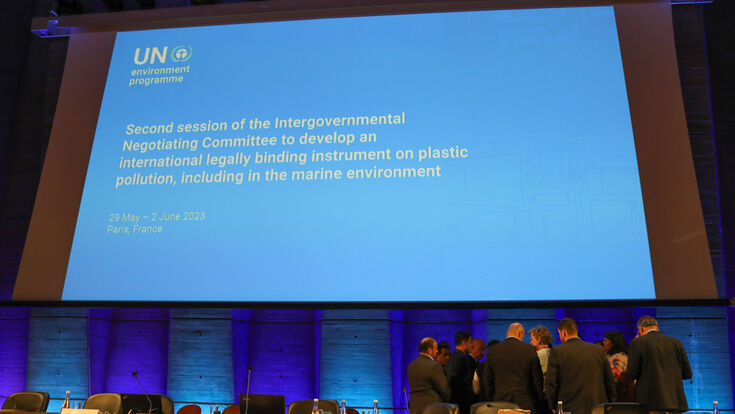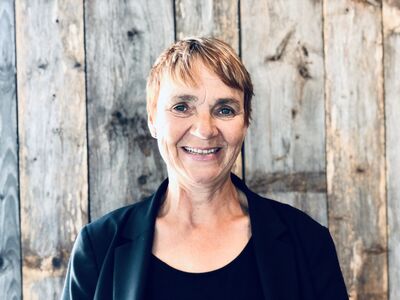Circular Economy : UN plastic pollution talks: Moving forward to a legally binding instrument

What is the best way to stop plastic pollution? That, in short, is the question to which the Intergovernmental Negotiating Committee (INC) is trying to find an answer. With the help of the INC, the United Nations (UN) wants to establish a legally binding agreement to end plastic pollution. Because end it we must. That is something on which all stakeholders agree.
During its second session in Paris from 29 May to 2 June (INC-2), participants aimed to move forward in preparing a draft.
Following the next meeting in Nairobi in November this year, further meetings are planned in Ottawa, Canada in April 2024 and in the Republic of Korea in October or November 2024.
Nancy Strand, Coordinator of the ISWA Task Force on the Plastic Pollution Treaty, was at INC-2 and explains how the committee came about and the negotiating process so far.
Like our content? Subscribe to our newsletters!
How did the INC come about?
The Intergovernmental Negotiating Committee (INC) is the secretariat for developing an international legally binding instrument on plastic pollution, including in the marine environment. INC is part of the UN environmental programme UNEP.
At the fifth session of the United Nations Environment Assembly in February 2022, a historic resolution was adopted to develop an international legally binding instrument on plastic pollution. The aim is to complete the negotiations by the end of 2024. A comprehensive approach addressing the whole life cycle of plastics will underpin the instrument.
What is the importance of the INC?
The Plastics Treaty will influence plastic production, consumption and waste management in all countries.

As UNEP states, the rapid increase in plastic pollution is a major global environmental problem with negative impacts on the environmental, social, economic and health dimensions of sustainable development. If we don’t make changes, the amount of plastic waste entering aquatic ecosystems could almost triple from around 9-14 million tonnes per year in 2016 to a projected 23-37 million tonnes per year by 2040.
Could you explain the INC process?
The INC process is similar to developing other global UN agreements, e.g. the Paris Agreement on climate change (2015) and the Biodiversity Framework (2022).
INC is operating on behalf of UNEP in negotiating the Plastic Pollution Treaty. INC prepares and carries out the negotiation meetings INC-1, INC-2, etc.
Five INC meetings have been planned. The aim is to end with a treaty by the end of 2024, to be signed by the Member States.
How many countries are part of the INC?
UNEP works closely with its 193 Member States and representatives from civil society, businesses, and other major groups and stakeholders to address environmental challenges through the UN Environment Assembly, the world’s highest-level decision-making body on the environment.
All 193 Member States are part of the negotiations. Delegations from more than 170 countries were present in Paris. ISWA participated as an observer among 600 other stakeholders.
Is an agreement likely to rely on national self-reporting? Are nations likely to underestimate their contributions to plastic disposal?
This is too early in the process to say.
The question of circularity, as well as leakage that may cause harm to the environment and to people’s health, is on the agenda in the negotiations.
Is the agreement likely to cover just ocean pollution, or all plastic pollution?
According to UNEP, plastic production has grown exponentially in recent decades and now stands at around 400 million tonnes per year – a figure set to double by 2040. So this landmark agreement will address all plastic pollution: the full life cycle of plastic from source to ocean.
Could different types of plastic or plastic ingredients be banned or treated differently?
Yes. This is being discussed.
It is on the agenda to discuss restrictions or bans on specific chemicals, additives, etc. as well as polymers that may cause harm to the environment and hinder recycling.
The question of circularity, as well as leakage that may cause harm to the environment and to people’s health, is on the agenda in the negotiations.
What are the competing ideas you’ve seen in the first sessions of the INC?
At INC-2, a lot of attention was paid to how plastic production and consumption can be reduced, and several stakeholders advocated a strong focus on the upstream measures. Upstream measures are among the most difficult questions in the treaty. There were also discussions on mandatory vs voluntary elements in the treaty.
ISWA has made it a major message to bridge the gap between the issues of reduction and prevention – and the issue of waste management and leakage control, as there is no contradiction between these two approaches.
As can be seen in our written submission, ISWA’s messages cover the whole life cycle approach and include reduction, circularity, waste management, governance and finance, and sustainable communities.
It is also important to include the informal waste sector and discuss a just and inclusive transition.
An initial draft will be discussed at the next round of talks in Nairobi, Kenya in November.
Second Session Wrap-up
- 135 Member States explicitly called for binding global rules.
- Over 90 Member States called for the treaty to focus on the elimination or phase-out of problematic polymers, chemicals and high-risk plastic products.
- A decision was taken to mandate the development of a zero draft treaty text during the intersessional period.
- A number of states seeking to delay the process used the procedural discussions to stall talks on the substance of the treaty and tried to give any state the ability to veto the entire treaty.
- The co-chairs of the High Ambition Coalition to End Plastic Pollution (HAC) introduced a joint ministerial statement for INC-2, supported by more than 50 ministers, including new HAC members Japan, Gabon and Mauritius.
Seven key deliverables for success
After the End Plastic Pollution resolution was adopted at the fifth session of the United Nations Environment Assembly, a group of like-minded countries formed the High Ambition Coalition to End Plastic Pollution (HAC). Co-chaired by Norway and Rwanda, its ambition is to end plastic pollution by 2040. HAC has therefore defined seven key deliverables for success in this regard:
- Eliminate problematic plastics through measures such as bans and restrictions
- Establish global sustainability criteria and standards for plastics
- Define global baselines and targets for sustainability throughout the life cycle of plastics
- Ensure transparency in the plastics value chain, including material and chemical composition
- Develop mechanisms to strengthen commitments, targets and monitoring over time
- Implement monitoring and reporting at each stage of the plastics life cycle
- Enable effective technical and financial assistance, scientific and socio-economic assessments.

